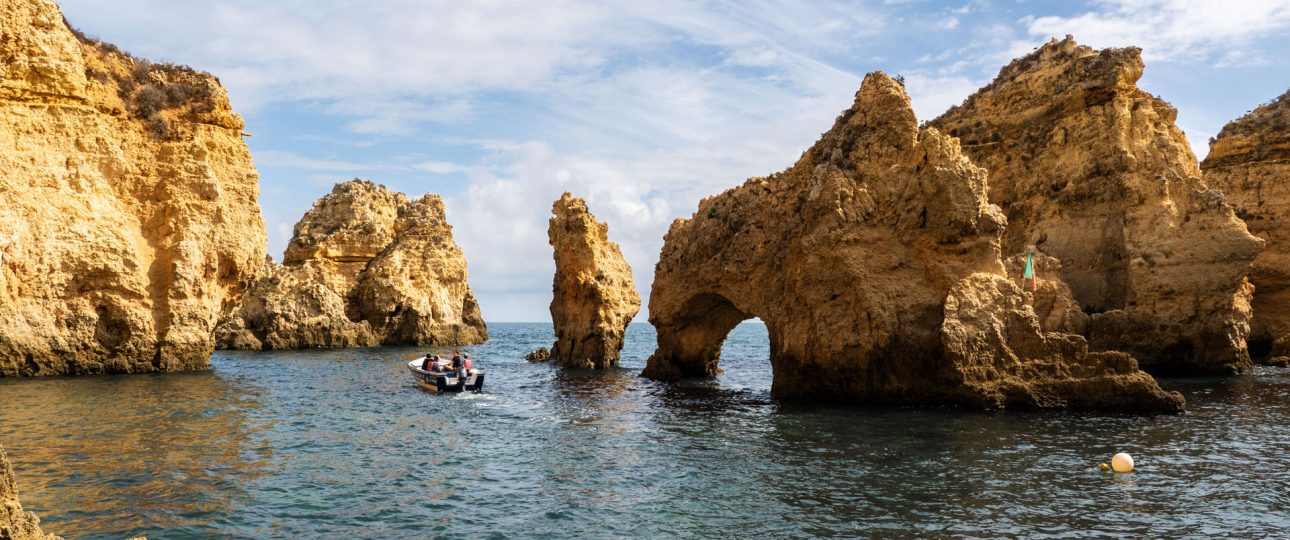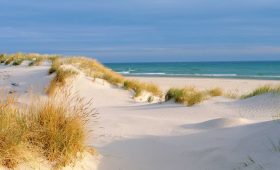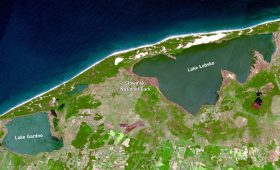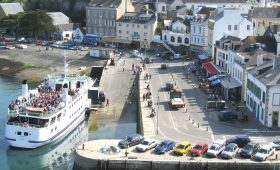Introduction to Lagos, Portugal
Located in the picturesque Algarve region of Portugal, Lagos is a vibrant coastal town celebrated for its dramatic cliffs, golden beaches, and rich historical tapestry. Offering a perfect blend of cultural experiences and natural beauty, Lagos is a must-visit destination for travelers seeking both relaxation and adventure.
Historical Significance
The history of Lagos stretches back to the Neolithic Age, evidenced by ancient menhirs like the Menir da Cabeça do Rochedo. The town played a pivotal role during the Age of Discoveries in the 15th and 16th centuries, serving as a departure point for numerous expeditions. Notably, Lagos was home to one of Europe’s first slave markets, where enslaved individuals from the Nigerian city of Lagos were traded. The town was also devastated by a massive tidal wave following the 1755 earthquake.
- Fortaleza da Ponta da Bandeira, built in the 17th century, is a historic site that once protected the harbor from pirates.
Unique Attractions
Lagos is renowned for its stunning landscapes and unique attractions that captivate visitors from around the world. Here are some highlights:
1. Ponta da Piedade
Ponta da Piedade is perhaps the most iconic natural attraction in Lagos. This series of breathtaking cliffs and rock formations along the coast creates a mesmerizing landscape.
- Explore the area by taking a boat tour to get up close to the caves and grottoes.
- For the adventurous, kayaking is a popular way to navigate through the intricate rock formations.
- Don’t forget your camera – the views are absolutely breathtaking, especially at sunset!
2. Lagos Beaches
The beaches in Lagos are world-renowned for their beauty. Some of the best include:
- Praia Dona Ana: Known for its golden sands and clear waters, this beach is perfect for sunbathing and swimming.
- Praia do Camilo: This beach is famous for its stunning cliffs and vibrant blue waters, accessible via a long staircase.
- Meia Praia: A long stretch of beach that offers plenty of space for relaxation and various water sports.
3. Historic Town Center
The historic center of Lagos is a delightful area filled with cobblestone streets, charming shops, and local eateries. Key points of interest include:
- Igreja de Santo António: A beautiful church known for its intricate baroque interior.
- Mercado de Escravos: The site of Europe’s first slave market, now a museum offering insights into this dark chapter of history.
- Stroll through the lively Praça do Infante where you can soak in the atmosphere.
Best Time to Visit
The best time to visit Lagos is during the spring (April to June) and fall (September to October). During these months, the weather is pleasantly warm, and the crowds are relatively smaller compared to the peak summer months. Here’s a breakdown of the seasonal weather:
- Spring: Mild temperatures, blooming flowers, and plenty of sunshine.
- Summer: Hot and busy, perfect for beachgoers and nightlife enthusiasts.
- Fall: Warm weather persists, and the crowds begin to thin, making it ideal for a more relaxed experience.
- Winter: Mild temperatures but cooler and rainier, suitable for those looking to escape the cold elsewhere.
Getting There
Reaching Lagos is relatively straightforward, with various travel options available:
- By Air: The nearest major airport is Faro Airport, approximately 75 km away. From there, you can rent a car, take a bus, or book a shuttle service to Lagos.
- By Train: Regular train services run from Faro to Lagos, taking about 1 hour and 50 minutes. Trains from Lisbon connect at Tunes, with a total journey time of around 4 hours.
- By Bus: Intercity buses operate from several cities, including Lisbon and Faro, providing a budget-friendly travel option.
Local Transportation
Once in Lagos, exploring the town is convenient thanks to various transportation options:
- Walking: The town center is compact and pedestrian-friendly, making it easy to explore on foot.
- Bicycles: Many shops offer bicycle rentals, allowing you to explore the coast and surrounding areas at your own pace.
- Taxis and Rideshares: Taxis are readily available, and rideshare services like Uber operate in the area for convenient travel.
Experiencing Local Culture
The culture in Lagos is rich and vibrant, with influences from various eras throughout its history. Here are some ways to immerse yourself in the local culture:
- Food and Drink: Explore local cuisine by trying dishes like cataplana de marisco (seafood stew) and pastel de nata (custard tart).
- Festivals: Attend local festivals such as the Lagos Carnival or the Festival of Saint Anthony, celebrated in June.
- Art Galleries: Visit local art galleries showcasing works from regional artists, reflecting the area’s rich artistic heritage.
Practical Travel Tips
Here are some practical tips to enhance your visit to Lagos:
- Learn a few basic Portuguese phrases; locals appreciate the effort.
- Pack sunscreen and stay hydrated, especially during the summer months.
- Try to sample local wines, particularly the Vinho Verde from the region.
- Be mindful of the tides if planning to swim or kayak; some beaches can have strong currents.
Summary of Facts
- Lagos is located in the Algarve region of Portugal.
- The town has a rich history dating back to the Neolithic Age, playing a significant role during the Age of Discoveries.
- Key attractions include Ponta da Piedade, beautiful beaches, and a historic town center.
- The best times to visit are during spring and fall for pleasant weather and fewer crowds.
- Transportation options include air travel, trains, buses, biking, and walking.
- Local culture can be experienced through food, festivals, and art galleries.
- Practical travel tips include learning basic Portuguese, packing sunscreen, and being mindful of tides.




